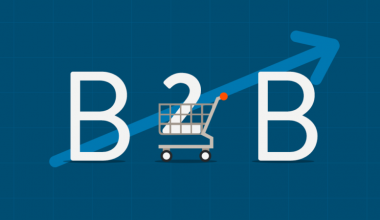It may seem obvious, but it bears repeating: customers do not want to be sold to; they want to be understood. This is why pushy sales pitches and cheap gimmicks fall flat with many customers. However, if you’re a salesperson looking to connect with your customers and build long-term relationships, consultative selling may be the way to go. To me, the distinction between consultative selling and traditional sales is analogous to the distinction between a therapist and a doctor. Read on for a clear, concise consultative selling definition, some example of consultative selling, techniques to apply, and a training book you can use. Without further ado, let’s get into detail!
What is Consultative Selling?
Consultative selling is a method of selling that focuses on building value and trust with prospects and exploring their needs before offering a solution. The salesperson’s first goal is to establish a relationship; the second is to provide the appropriate product.
Consider this: You enter a store in search of a new pair of shoes. As soon as you walk in, a salesperson approaches you and begins pitching the latest shoe collection without even asking what you want. You leave the store, overwhelmed and frustrated, without purchasing anything.
Consider the inverse. When you walk into a store, a salesperson greets you warmly and inquires about your preferences, the type of shoes you require, and any special requirements. They carefully listen to you before presenting you with a few options that meet your requirements. As you approach the cash register, you’re confident that you’re making the right decision. This is how consultative selling works.
What are the Benefits of Consultative Selling?
Based on the relationship they’ve built with their audience, a company may be more likely to satisfy customers and motivate them to return for future sales by meeting a client’s requirements. Consultative selling can also benefit a company in the following ways:
- Expanding its customer base
- Assisting it in retaining current customers
- Increasing revenue as a result of a growing clientele
- Providing it with a competitive advantage in the market
- Providing opportunities for employees to practice active listening and other soft skills
Consultative Selling Skills & Techniques
Before discussing a product or solution, the sales professional use consultative selling to learn about the customer’s needs. When product knowledge is delivered and positioned based on the customer’s needs and language, it is transformed into a tailored solution.
Consultative selling necessitates that sales professionals concentrate on executing these key techniques:
#1. Avoid Being Seller-centric
Almost all salespeople believe they are customer-focused, but only a few truly are. When under pressure from a more difficult environment, sales professionals resort to seller-centric behaviors to try to strong-arm customers or gloss over core issues. However, these actions exacerbate mistrust.
Salespeople must understand the person in the other chair. This entails developing an accurate diagnosis of their problem. This knowledge allows the seller to earn the right to ask probing questions, improves the seller’s ability to effectively position solutions, and fosters customer trust.
#2. Shift to a Mindset of Authenticity
Salespeople must give before they receive. Early in the process, establishing a shared commitment to solving buyers’ business challenges fosters openness.
This candor enables sales professionals to more accurately diagnose their buyer’s business challenges, stated needs, and unidentified needs. From here, the seller can demonstrate to the buyer how to effectively leverage the specific pieces of data required to reach a resolution.
#3. Lead the Conversation with a Plan
A straightforward approach that begins the conversation with a clear direction allows sales professionals to gain an early indication of the buyer’s expectations. If the intended path diverges from the buyer’s conversational goals, the sales professional can adjust accordingly.
#4. Build Decisive Momentum
By eliciting feedback, sales professionals can guide the customer through the dialogue. This gives them an idea of how well they understand the solutions and ideas that have been discussed.
This periodic checking moves the buyer to the next step; it helps build commitment incrementally throughout the purchasing process. This practice creates decisive momentum by aligning with the buyer, making each subsequent decision easier than the last.
#5: Use Questioning to Gain Insights
Asking increasingly sophisticated questions assists the buyer in connecting the dots and drawing a line that leads to the best solution.
Insightful questions get to the heart of the matter quickly and allow the sales professional to pitch ideas. Inviting the buyer to consider alternative solutions can be made less intimidating by framing the concepts as questions.
#6. Understand the Neuroscience of Why Buyers Buy — or Don’t Buy
Buyers are people, and people have three basic needs for happiness that influence how they perceive what is going on, what they listen to, and how they ultimately make decisions.
These are the three needs: autonomy, competence, and relatedness. Strong questioning skills assist sales professionals in meeting these needs by remaining emotionally connected with the buyer, avoiding appearing manipulative, and creating a safe environment in which to discuss difficult or sensitive issues.
#7. Base your decisions on facts, not assumptions.
Anchoring is a type of cognitive bias that describes the common human tendency to over-rely on a single piece of information. Salespeople are especially prone to anchoring to their own assumptions rather than diligently seeking out the facts through dialogue.
Anchors can cause salespeople to overlook or dismiss potentially useful information that could help them move the sale forward and position a more compelling and valuable solution.
Principles of Consultative Selling
Here are five steps to improving your consultative selling strategy and help you with basic training:
#1. Research
Whether we’re sifting through ancient documents, scanning Yelp reviews, or reading a potential customer’s LinkedIn profile, research can help us improve our chances of success. Before making contact with potential customers, spend some time researching them and their company.
#2. Ask
Consider your product or service to be puzzle pieces. Every piece has been counted, and when assembled correctly, it will form a complete image. There’s just one problem: you don’t have the image-filled box. But the buyer does, and in order for you to understand how everything fits together, the buyer must show you. And, if you ask the right questions, they will, bit by bit.
Asking may appear simple, but the simplest things are often the most difficult to master. This is because many salespeople’s first instinct is to charge out of the gate with a slew of talking points.
#3. Learn to listen
Strong active listening skills are required for consultative selling. Active listening necessitates the listener not only hear but also invest in what the speaker is saying. Concentration is required for this type of listening, which includes both verbal and nonverbal cues. If a client appears to be distracted by other responsibilities or a hectic schedule, it may be more convenient to meet at a different time.
#4. Be genuine.
To excel as a salesperson, strive to cultivate trusting relationships with your clients by being authentic. For example, if you believe the product or service is inappropriate for your client’s needs, be forthright, because it will help you improve your consultative selling skills. You may be able to gain their trust and loyalty, which can lead to future sales, by demonstrating that the relationship motivates you first and sales come second.
#5. Follow up
A follow-up conversation is part of a traditional sales transaction, but try to be patient and not rush your client. It’s possible they’re still deciding, or they want to consult with a supervisor and get budget approval.
Examples of Consultative Selling
An example of consultative selling techniques is frequently seen when purchasing a car. In this scenario, the car salesperson asks what type of car you want, tries to understand how you’ll use the car, learns what’s important to you, and then makes recommendations based on what they’ve learned. There are other examples that can also fit into this consultative selling, for example, real estate, software sales, and travel planning. Having understood this example, let’s look at the best consultative-selling books you can have.
Best Consultative Selling Books
This book list is a curriculum for new consultative selling persons or salespeople. Aside from getting out there and doing the reps, one of the most effective ways to improve your consultative selling knowledge is to read a business book. This essential book list will help you lay the groundwork for a successful career and training in business-to-business consultative modern selling.
#1. The Seven Habits of Highly Effective People (by Stephen Covey)
This is a consultative selling book that everyone, regardless of profession, should read. Most of your problems can be traced back to one person: you. Covey’s seven habits will help you get out of your own way when it comes to sales success, just as they will help you get out of your own way when it comes to human relationships. This consultative selling book is an open ticket to extensive consultative sales training and knowledge.
#2. Mastery (by George Leonard)
This consultative selling small book will teach you basic training and how to master your craft. Mastery, written by a 5th-degree Aikido master (one of the most frustrating and difficult martial arts to learn), will teach you not to dabble. It will teach you how to stay on the plateau (where you don’t seem to be making any progress) long enough to achieve your next breakthrough to higher performance.
#3. The Brand You 50 (by Tom Peters)
Tom’s small book contains fifty ideas. However, it is packed with ideas and checklists to help you frame your thinking about how to become someone worth doing business with and buying from. It’s a small book, but it contains enough ideas and action items to keep you busy for months if not years.
#4. Consultative Selling (by Mack Hanan)
Mack’s recipe works exactly as advertised. However, it is difficult for salespeople to put this strategy into action. Consultative selling is not what most people think it is. It’s not about being soft or not selling at all. It is about selling effectively and shifting the decision criteria away from price and toward the cost.
Even if it is difficult, the sooner you accept that you must shift your focus from the price to the cost of a genuine business improvement, the better. You should be aware that, as the name suggests, consultative selling is a good book that will provide you with the necessary information and training.
#5. The Discipline of Market Leaders (by Michael Treacy and Fred Wiersema)
Creating value for your ideal clients necessitates business knowledge. This small book is a great introduction to business strategies, basic training, and consultative selling. When you understand your ideal client’s strategies, you gain a better understanding of what motivates their needs and decisions. You also understand how your company’s strategy limits your client options.
What are the 5 Parts that make up the Consultative Selling Framework?
These five sections are as follows:
- Research.
- Ask.
- Listen.
- Inform.
- Close.
What are the Steps in Consultative Selling?
The 7 Steps of a Consultative Sales Approach include:
- Create rapport.
- Qualify the client.
- Decide whether you want or need something.
- Sell the business.
- Fill a Want or Need.
- Sale or Act of Commitment.
- Confirm the Sale.
What are the 3 Primary Roles in Consultative Selling?
According to our research, a collaborative salesperson must play three basic roles: Business Consultant, Strategic Orchestrator, and Long Term Ally.
What are Consultative Selling Skills?
Consultative selling is a needs-based selling strategy that focuses on developing relationships with customers and prospects, understanding their problems, and developing solutions to their problems through open-ended questions and active listening.
What is the Difference between Product Selling and Consultative Selling?
The focus of consultative selling is on the customer’s needs, whereas PLG focuses on the product’s standard features and benefits. In contrast to product selling, which answers any questions the customer has about the product, consultative sales calls rely more on questions.
What is one of the Principles of Consultative Selling?
Consultative selling is a philosophy based on developing a relationship with your prospects and adhering to essential principles such as asking questions, listening to their needs, and personalizing your product or service for them.
Conclusion
To master consultative selling, you must first thoroughly understand the buyer’s specific needs and objectives. This is accomplished through extensive research, active listening without hard selling, and the development of an authentic, personalized relationship.
Using tools for prospect research and automation can be extremely beneficial in consultative selling, but your biggest challenge will be maintaining an authentic seller-buyer relationship. Always keep in mind that the goal of the pitch is to make your prospect happy, not to add a sale to your bottom line.
- What is B2B Sales? 15 Best Strategies for B2B Sales Lead
- Consultative Selling Approach: Complete Guide to Consultative Sales
- SALES PERSON: Job Description, Skills & Salary
- SALES STRATEGY: Meaning, Examples, Plan, Types and Presentation
- Outside Sales: Best 2023 Practices & Detailed Tips (Updated)
- Best Free CRM Software in 2023






